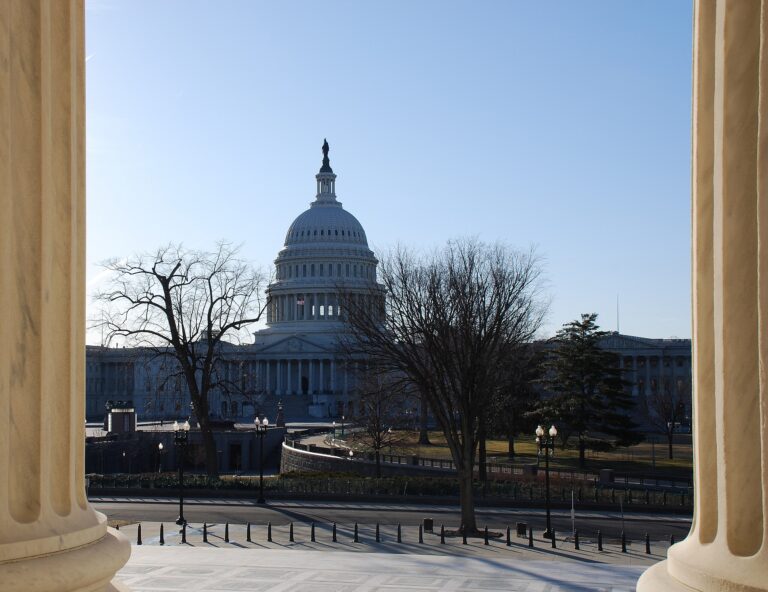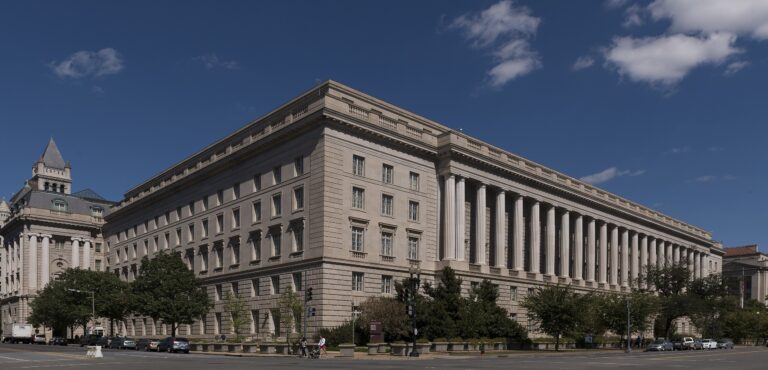
Affirmative Action, Religious Liberty, and The Freedom to Discriminate
Rachel F. Moran
Photo by Andrew Tan on Pixabay (CCO).
Debates over affirmative action in higher education have raged for years. Supporters of the programs argue that they promote inclusion, while opponents believe that they are nothing more than reverse discrimination. A recent decision by the U.S. Supreme Court has banned the use of racial preferences in admissions and made clear that the prohibition applies to both public and private colleges and universities. At the same time, the Court has been strengthening the autonomy of sectarian institutions to act on sincerely held religious beliefs. These two lines of precedent raise the possibility that religiously affiliated colleges and universities might be empowered to continue to use race in admissions if diversity advances a faith-based mission. Unfortunately, that interpretation could open the door to other forms of discrimination, for instance, against members of the LGBTQ community, even as federal funds flow to the schools. The prospect of such state-sponsored discrimination should give pause to anyone who values public norms of equality.
In 2023, in Students for Fair Admissions (SFFA) v. President and Fellows of Harvard College, the Supreme Court struck down affirmative action in admissions at two highly selective institutions, Harvard College and the University of North Carolina. In doing so, Chief Justice John Roberts’ majority opinion overturned decades of precedent. In 1978, when the Supreme Court initially upheld the use of race in admissions in Regents of the University of California v. Bakke, Justice Lewis Powell, the key swing vote, conceived of diversity as a pedagogical rationale. Noting that colleges and universities enjoyed academic freedom, he concluded that their institutional autonomy extended to composing the student body. In Justice Powell’s view, affirmative action allowed schools to admit students from a range of backgrounds and thus promote the free exchange of ideas. So long as admissions officers used holistic review that treated race as just one factor in the decision-making process, the programs could pass constitutional muster. A majority of the Court affirmed this reasoning in 2003 in Grutter v. Bollinger, and the Justices endorsed diversity once again in 2016 in Fisher v. Texas.
In SFFA, the Court rejected the diversity rationale, concluding that racial categories are too arbitrary and artificial to be useful proxies for viewpoints and perspectives. However, the Justices noted that colleges and universities still could consider student essays that explain how racial experiences have shaped an applicant’s qualifications for admission. The Court’s opinion was noteworthy for another reason: the holding applied to both public and private schools. All the earlier decisions upholding affirmative action had involved public flagships, and the Court considered whether the use of race in admissions violated the Equal Protection Clause. SFFA extended the ruling to Harvard, an elite private institution, by relying on Title VI of the Civil Rights Act, which requires that recipients of federal funding refrain from discrimination based on race, color, or national origin. Because federal funding includes not only grants but also student loans, it would be hard to find a college or university that is not covered by the mandate. In SFFA, the Court made clear that Title VI protects against discrimination in much the same way as the Equal Protection Clause does.
With the extension of the Court’s affirmative action jurisprudence to private institutions of higher education, religiously affiliated schools now appear to be governed by a prohibition on the categorical use of race in admissions.
Yet, at the same time that the Court has eliminated race-conscious admissions based on a diversity rationale, it has become increasingly receptive to religious liberty interests under the Free Exercise Clause.
In 2017, in Trinity Lutheran v. Comer, the Court held that the state of Missouri could not exclude religiously affiliated schools from competing for grants to use recycled materials to repave playgrounds. Writing for the majority, Chief Justice Roberts emphasized that Trinity Lutheran’s application was turned down solely because of its religious status rather than its use of the funds for religious purposes. In his view, this burdened religion in a way that violated the Free Exercise Clause.
Three years later, in Espinoza v. Montana Department of Revenue, the Court found a Free Exercise violation when parents were precluded from using state-subsidized Blue Sky scholarships at sectarian schools. Again, Chief Justice Roberts emphasized that the discrimination was purely status-based. Then, in 2022, the Court decided Carson v. Makin, a lawsuit involving Maine’s tuition assistance program for students living in towns too small to support a public high school. The support was available for attendance at both public and private schools, but sectarian schools were ineligible to receive the aid. The Court again found a Free Exercise violation, this time determining that discrimination, whether based on religious status or religious use of the funds, was unconstitutional. These precedents have consistently held that sectarian institutions cannot be forced to choose between engaging in religious activity and receiving a generally available public benefit. The only notable exception relates to training for the ministry. In a 2004 decision in Locke v. Davey, the Court concluded that providing government funds for theological instruction violates the Establishment Clause based on longstanding historical practices and understandings.
The simultaneous decline of affirmative action and the invigoration of Free Exercise rights raises an intriguing question about the role of diversity in promoting religious as well as secular values. In the SFFA case, highly selective sectarian colleges and universities asserted that their faith-based missions include a commitment to use race to diversify the student body. Nearly sixty Catholic institutions of higher education submitted an amicus brief in support of Harvard and the University of North Carolina. The brief contended that these Catholic schools “seek diversity in their student bodies, including racial diversity, not only to serve their academic mission but also to advance their religious mission.”
As a result, the brief concluded that diversity served not only a compelling interest in academic freedom but also “a compelling interest in freedom of religious practice and expression that is grounded in the First Amendment’s Free Exercise Clause.” Can sectarian schools be forced to choose between federal funding and a faith-based mission? Or does this violate the Free Exercise Clause?
The Court’s Free Exercise opinions have made clear that the government cannot deny subsidies (or even the opportunity to compete for subsidies) based on an institution’s religious status or even its use of the funds for religious activities. That said, there is a real question as to how sectarian colleges and universities would demonstrate that using race in admissions relates to a religious, rather than an academic, mission.
The challenge of distinguishing a sectarian university’s religious and academic missions has arisen before. In 1983, in Bob Jones University v. United States, the Court considered whether a Christian school should lose its federal tax exemption because it excluded students who engaged in interracial dating or marriage. University officials insisted that the policy involved a constitutionally protected liberty interest because it was based on a sincere belief that the Bible prohibited this conduct. In rejecting Bob Jones’ claim, the Court emphasized an important public policy interest in non-discrimination. Internal correspondence about the case revealed that Justice Powell—the architect of the diversity rationale—believed that the Court should evaluate Bob Jones as an educational rather than a religious organization. For Powell, the case would have come out differently had Bob Jones been a seminary.
Recent cases on the ministerial exception show that judges have been preoccupied with the distinction between religious and academic activities at sectarian institutions of higher education. This exception bars an individual from suing for employment discrimination related to a position that involves ministerial work. Endorsed by the Supreme Court in Hosanna-Tabor Evangelical Lutheran Church and School v. EEOC in 2012, the doctrine is designed to protect religious autonomy in selecting leaders. The Court has since elaborated on the scope of the exception in its 2020 decision in Our Lady of Guadalupe v. Morissey-Berru. There, the Justices applied the term “minister” not only to employees with that formal designation but also to those who serve an important religious function.
The lower courts have struggled to determine how the exception applies to religious colleges and universities. For example, in a 2023 decision in Palmer v. Liberty University, Inc., the Fourth Circuit Court of Appeals addressed an art professor’s claim that she had been wrongfully terminated based on her age. Liberty University, a Christian institution of higher education, defended itself in part by invoking the ministerial exception. The lower court found that teaching art classes did not qualify as a ministerial function, but the judge nonetheless ruled for Liberty University because there was no direct evidence of age discrimination. On appeal, the Fourth Circuit chose to avoid the question of whether the ministerial exception applied, instead relying solely on the plaintiff’s failure to establish discrimination. A concurring opinion argued that the majority should have applied the exception because teachers were expected to serve as role models and to promote Christian values, regardless of the topics they taught.
In a 2021 decision in DeWeese-Boyd v. Gordon College, the Massachusetts Supreme Judicial Court rejected the notion that requiring faculty to be Christian teachers and scholars converted all of them into ministers. The plaintiff, who taught social work, successfully argued that her discrimination claim, which was based on her gender and her vocal criticism of the college’s policies related to the LGBTQ community, should proceed. Interestingly, Gordon College, a Christian liberal arts institution, had amended its faculty handbook to make clear that professors were ministers “expected to participate actively in the spiritual formation of our students into biblically-faithful ambassadors for Christ.” The campus’s chapter of the American Association of University Professors immediately issued a statement that objected to the college’s efforts “to bring faculty within the scope of the Ministerial Exception” through “a mere change of label while wrongly describing the faculty role.” Ultimately, the state high court refused to accord decisive weight to the formal designation in the handbook, instead looking at the realities of the plaintiff’s work at the school. Cases like these illustrate what the California Court of Appeals, in its 2004 decision in Hope International University v. Superior Court, described as the unique challenges of applying the ministerial exception in an educational setting in which “the line between ‘teaching’ and ‘preaching’ can be a fine one.”
The practices described in the Bob Jones case and the ministerial exception litigation alert us to one serious pitfall that could arise if religious institutions were exempted from the SFFA decision based on Free Exercise rights. Exemptions from federal civil rights laws could be used to permit other forms of discrimination, most notably against LGBTQ students. In a 2023 decision in 303 Creative v. Elenis, the Justices allowed a wedding website designer to withhold services from same-sex couples. The designer defended her actions on Free Exercise and Free Speech grounds, but the majority did not reach her religious freedom claims. Instead, the Court found that because the designer engaged in creative expression, her free speech rights were violated. That is, she was forced to speak when she preferred to remain silent. If sectarian colleges and universities were to invoke the Free Exercise Clause to continue using race-conscious admissions practices, that litigation would squarely present the question of whether religious beliefs can exempt adherents from non-discrimination mandates like Title VI.
In the fight against Jim Crow segregation, the Reverend Martin Luther King, Jr. famously said that civil rights activists prevailed because “God was on our side.” He described ardent segregationists who invoked the Bible to justify separation of the races as Christians who “have strayed away to some far country of sin and evil.” Reverend King’s account made plain that adherents have not always agreed on the religious significance of race. Today, we see similarly intense disagreements over faith-based interpretations of same-sex relationships. Conferring a religious exemption from Title VI’s prohibition on discrimination could make room for affirmative action. Yet, the realities of religious pluralism suggest that exemption from federal civil rights laws also could create a home for the explicit use of exclusionary practices, for example, through denial of admission to applicants in same-sex relationships. Institutions that adopt these exclusionary measures would be receiving federal funds, not just tax exemptions. The consequences of such religious exceptionalism could be momentous and morally precarious. Creating spaces in which intolerance can flourish with direct government support would inflict a grave injury on the body politic. Under the circumstances, it seems that Justice Powell might have the better part of the argument. Perhaps, as he suggested in Bob Jones, sectarian colleges and universities should be treated as primarily educational, rather than religious, institutions when it comes to federal protections against discrimination. ♦

Rachel F. Moran is Professor of Law at Texas A&M University. In addition to three books, Moran has written over 100 articles, book chapters, and short commentaries exploring such topics as bilingual education, desegregation, and affirmative action.
Recommended Citation
Moran, Rachel F. “Affirmative Action, Religious Liberty, and The Freedom to Discriminate.” Canopy Forum, March 13, 2024. https://canopyforum.org/2024/03/13/affirmative-action-religious-liberty-and-the-freedom-to-discriminate/.
Recent Posts










